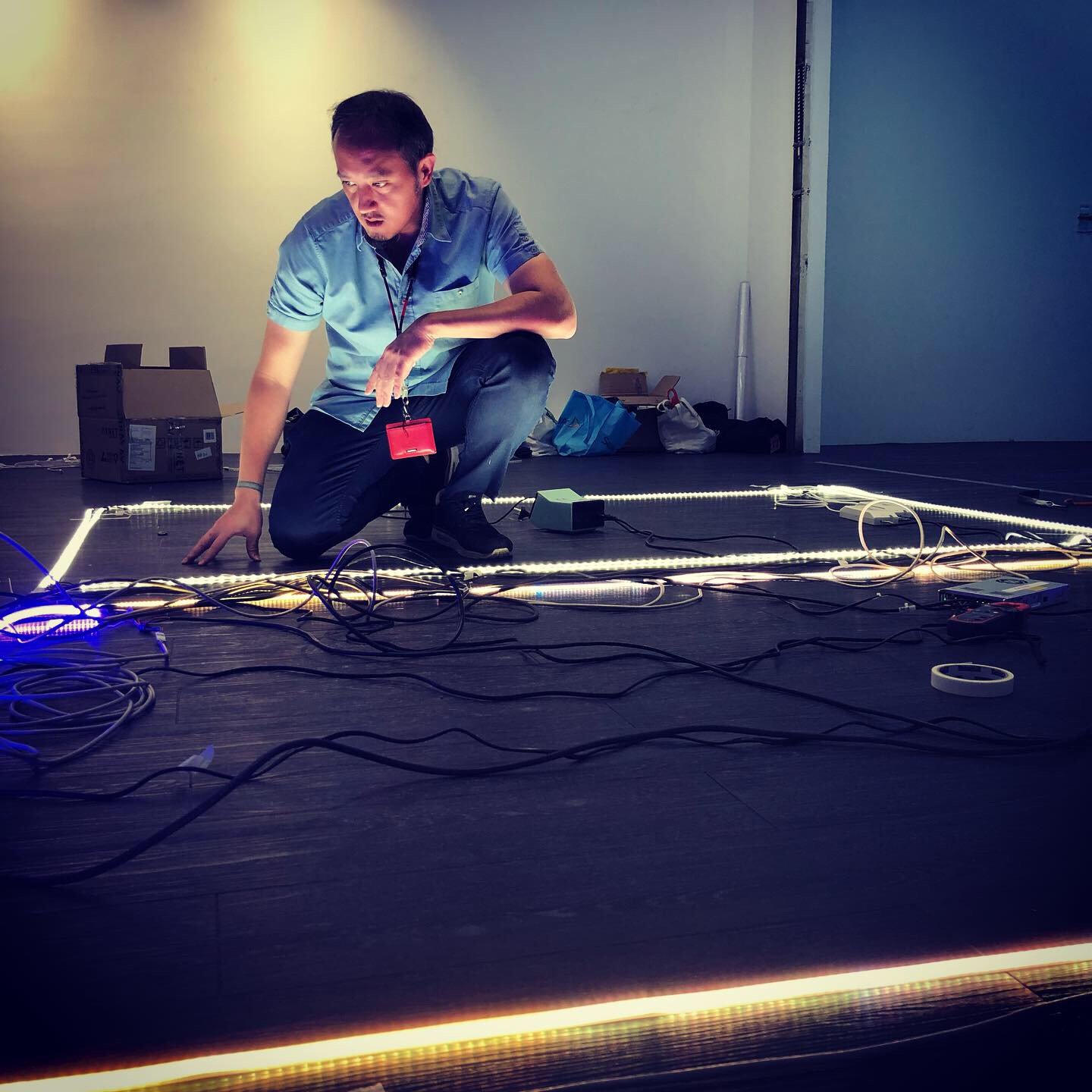About
Historical Context: The Transcendental Art Movement
Historical Context: The Transcendental Art Movement
The Transcendental Painting Group (TPG), active from 1938 to 1942 in New Mexico, was a collective of artists including Raymond Jonson, Emil Bisttram, Agnes Pelton, and others. They aimed to create abstract art that transcended the physical world, focusing on spiritual and idealistic realms through innovative uses of space, color, light, and design. Their manifesto emphasized painting that went “beyond the appearance of the physical world” to evoke spiritual and cosmic truths, influenced by Theosophy, Zen Buddhism, and the non-objective abstractions of Wassily Kandinsky and Piet Mondrian.
The TPG was a response to the dominant Social Realism and Regionalism of the 1930s, which focused on representational and societal themes. Instead, TPG artists pursued a universal, spiritual vision, often using geometric forms, vibrant colors, and symbolic motifs to evoke the sublime and the unseen. Their work was sidelined during World War II and remained relatively obscure until recent revivals, such as the 2021–2023 exhibition Another World: The Transcendental Painting Group.
The broader Transcendentalism movement (1830s–1850s), a philosophical and literary precursor, also informs this context. Led by Ralph Waldo Emerson and Henry David Thoreau, it emphasized individual intuition, the inherent goodness of nature and humanity, and a spiritual reality beyond empirical observation. This philosophy influenced visual arts, with artists like Christopher Pearse Cranch creating landscapes that visualized divine truths through nature.
Defining Neo-Transcendental Art in 2025
A Neo-Transcendental Art Movement in 2025 would likely build on these historical foundations but respond to contemporary issues, such as technological advancement, environmental crises, and the search for meaning in a hyper-digital, post-industrial world. Here’s a breakdown of what it could mean:
1. Core Principles
Spirituality and Intuition: Like the TPG, a Neo-Transcendental Art Movement would prioritize spiritual exploration and intuitive expression over materialist or rationalist concerns. Artists might seek to connect viewers with a sense of the sublime, the cosmic, or the collective unconscious, countering the alienation of modern life.
Transcending the Physical: The movement would use abstraction or symbolic forms to evoke realms beyond the tangible, possibly integrating digital or immersive media to represent metaphysical ideas.
Integration of Science and Spirituality: Drawing from the historical influence of Theosophy and modern interest in consciousness studies, neo-transcendental art might blend spiritual themes with cognitive science, artificial intelligence, or quantum theory, reflecting a 2025 fascination with the intersection of mind, technology, and the cosmos.
Response to Crisis: In 2025, global challenges like climate change, AI ethics, and social fragmentation could inspire artists to create works that offer hope, unity, or a vision of transcendence, much like the TPG’s response to the Great Depression and pre-WWII tensions.
2. Artistic Characteristics
Abstraction and Symbolism: Following TPG precedents, artists might use non-objective forms, vibrant colors, and geometric or organic shapes to convey spiritual or cosmic themes. For example, luminous gradients, as seen in Agnes Pelton’s work, could be reimagined in digital formats or immersive installations.
Technological Integration: In 2025, neo-transcendental art could incorporate virtual reality (VR), augmented reality (AR), or generative AI to create synesthetic or meditative experiences. These technologies could simulate the TPG’s goal of evoking “musical rhythms and auratic light.”
Environmental and Ecological Themes: Inspired by transcendentalism’s reverence for nature, artists might address the Anthropocene, using eco-conscious materials or digital landscapes to explore humanity’s relationship with the environment.
Interdisciplinary Approaches: The movement could blend visual art with sound, performance, or interactive elements, reflecting the TPG’s interest in synesthesia and the influence of music and esoteric philosophies.
3. Cultural and Social Context
Countering Materialism: Just as the TPG rejected the materialism of 1930s Social Realism, a 2025 movement might critique consumer culture, social media superficiality, or the commodification of art in the NFT market, advocating for art as a tool for spiritual awakening.
Transhumanism and Sci-Fi Aesthetics: Neo-transcendental art could align with transhumanist ideas, exploring how technology can elevate human consciousness or transcend biological limits. This might manifest in sci-fi-inspired visuals or speculative visions of a post-human future.
Global and Inclusive Perspectives: While the TPG was largely Western, a 2025 movement could incorporate diverse spiritual traditions (e.g., Hindu, Buddhist, or Indigenous philosophies) and global voices, reflecting a more interconnected art world.
Revival of Mysticism: The renewed interest in artists like Agnes Pelton and Hilma af Klint, whose spiritual abstractions have gained prominence since the 2010s, suggests a cultural appetite for mystical art. Neo-transcendentalism could build on this, appealing to audiences seeking meaning beyond secular frameworks.
4. Contemporary Artists and Influences
While no formal “Neo-Transcendental Art Movement” is explicitly documented in 2025, contemporary artists are already working in ways that align with these ideas:
Loie Hollowell: Her abstract paintings, likened to Agnes Pelton’s, use light and color to explore metaphysical themes. Her 2023 exhibition Tick Tock Belly Clock suggests a continuity of transcendental concerns.
Alexis McGuire: This emerging artist’s vibrant, layered compositions draw from social media and memory, evoking natural and metaphysical themes that resonate with transcendental ideals.
Joani Tremblay: Her digital collages-turned-oil paintings explore intericonicity and question humanity’s relationship with landscapes, aligning with transcendentalism’s focus on nature and intuition.
Jenna Kuiper: Her work, featured in the 2022 Another World exhibition at Richard Levy Gallery, uses symbols to evoke visceral responses to nature, echoing TPG’s spiritual abstractions. These artists, many of whom are women, suggest a gendered evolution of the movement, expanding the TPG’s legacy in inclusive ways.
5. Potential Manifestations in 2025
Exhibitions and Collectives: Galleries like Richard Levy in Albuquerque, which hosted a 2022 show inspired by the TPG, could spearhead neo-transcendental exhibitions. Virtual galleries or metaverse platforms might also showcase immersive transcendental works.
Technological Art Platforms: Artists could use AI to generate abstract visuals or VR to create meditative environments, aligning with the TPG’s synesthetic goals. Blockchain-based art communities might support decentralized, non-commercial art practices.
Eco-Spiritual Art: Projects addressing climate change, such as installations using sustainable materials or digital simulations of lost ecosystems, could embody transcendentalism’s reverence for nature.
Public Engagement: In 2025, neo-transcendental art might engage communities through participatory installations or online platforms, democratizing access to spiritual and introspective experiences.
Challenges and Critiques
Commercialization: The TPG’s spiritual focus was often at odds with the art market, and a 2025 movement might face similar tensions, especially with the rise of speculative NFT markets. Critics might argue that commodifying spiritual art undermines its intent.
Elitism vs. Accessibility: While transcendentalism emphasizes universal truths, its abstract nature can feel esoteric. A neo-transcendental movement would need to balance intellectual depth with inclusivity.
Skepticism of Mysticism: As Edgar Allan Poe once mocked transcendentalists as “Frogpondians” chasing “mysticism for mysticism’s sake,” modern critics might dismiss neo-transcendental art as overly sentimental or unscientific.
Cultural Appropriation: Incorporating global spiritual traditions risks misrepresentation if not done thoughtfully, requiring artists to engage authentically with diverse perspectives.
Conclusion
In 2025, a Neo-Transcendental Art Movement could represent a vibrant, interdisciplinary response to the challenges of the modern world, reviving the TPG’s mission to transcend the physical through abstraction, spirituality, and intuition. By leveraging technology, addressing environmental concerns, and embracing global perspectives, this movement would adapt transcendental ideals to a digital, interconnected age. While no such movement is formally recognized today, the work of contemporary artists like Loie Hollowell and Jenna Kuiper, alongside renewed interest in the TPG, suggests fertile ground for its emergence. It would be a call to reconnect with the sublime, offering hope and meaning in a fragmented world.
xAI. (2023). Grok [Large language model]. https://x.ai/grok

